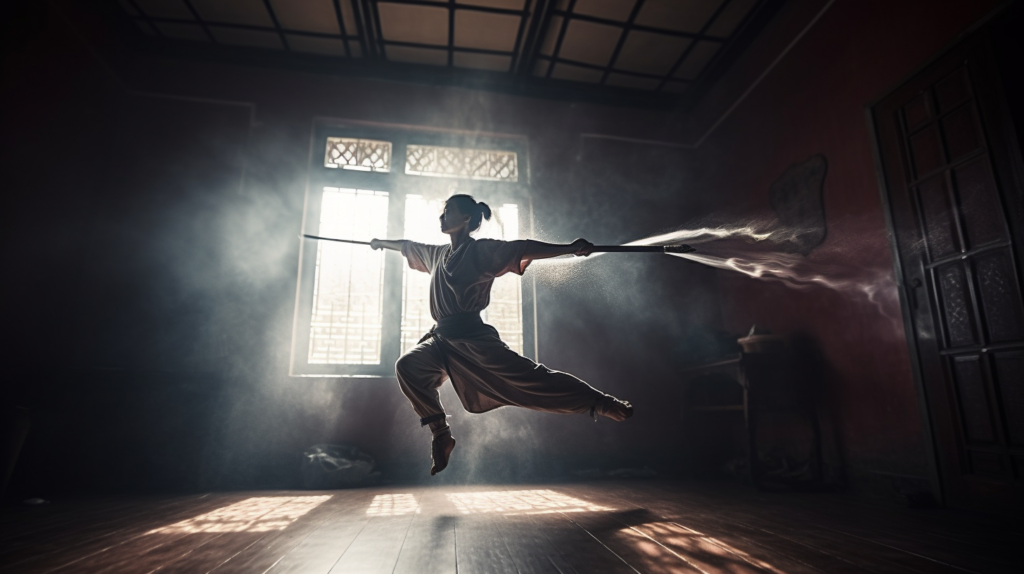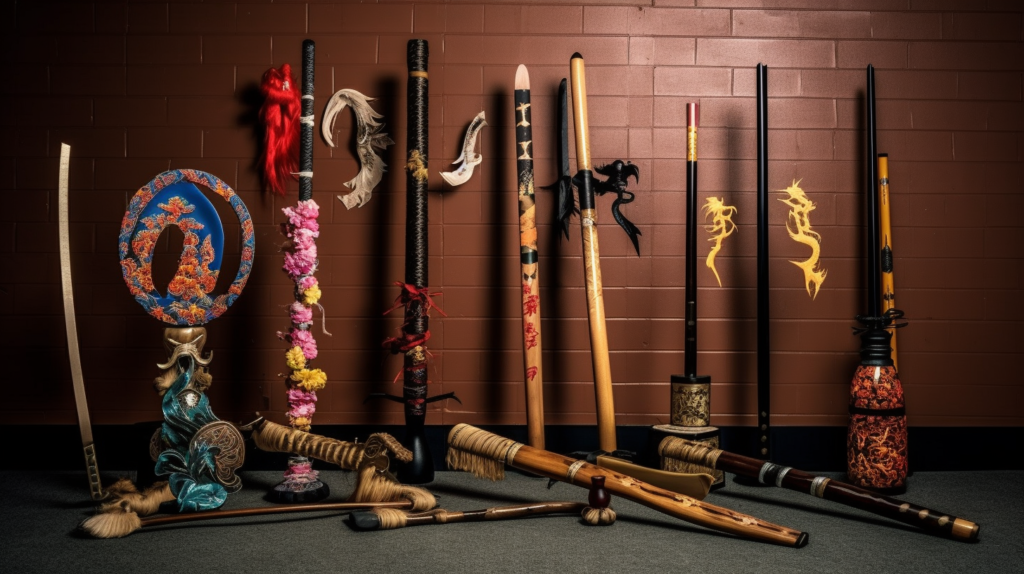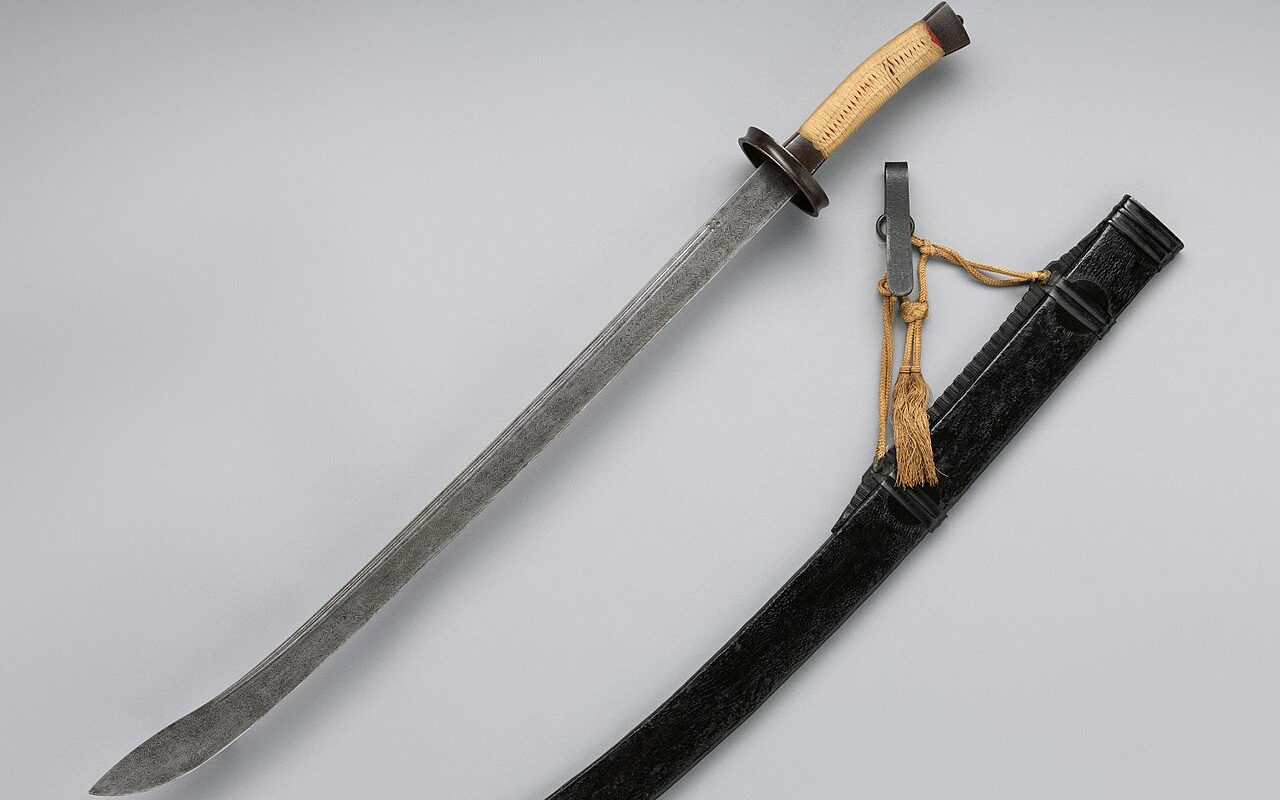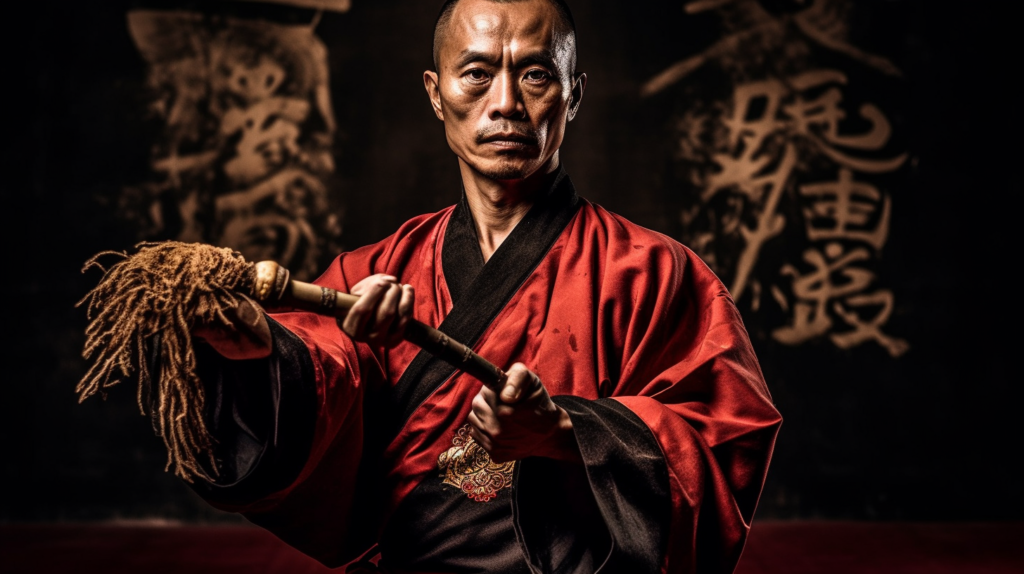The Intriguing World of Wushu
You might have seen the breathtaking acrobatics and fluid, powerful movements of wushu practitioners on TV or in live performances, but have you ever wondered about the weapons they wield with such finesse? Are there weapons in wushu? If so, what role do they play in this ancient martial art?
The answer is a resounding yes! Weapons are an integral part of wushu’s rich tradition, adding depth and variety to its practice. These weapons not only serve as tools for self-defense but also symbolize the cultural heritage and artistic expression within this mesmerizing martial art form.
In this comprehensive article, we’ll delve into the fascinating world of wushu weaponry and explore how these formidable tools shape the art’s techniques and philosophy.
A Brief History of Wushu Weaponry

The use of weapons in wushu can be traced back thousands of years to the early days of Chinese civilization. As various kingdoms fought for supremacy during China’s tumultuous history, advancements in weapon technology played a pivotal role in determining the outcome of these battles.
It was during these periods that skilled craftsmen honed their skills and developed innovative weapons that would later become iconic symbols within Chinese martial arts. From long-range projectiles like bows and arrows to close-combat weapons such as swords and spears, these tools became essential elements in the arsenal of warriors seeking victory on the battlefield.
As centuries passed, many traditional weapons became obsolete with the advent of modern warfare. However, instead of fading into obscurity, these ancient arms found new life within martial arts like wushu. They began to symbolize not just power and ferocity but also the elegance, grace, and artistry that define this captivating discipline.
The Diverse Array of Wushu Weapons
Wushu boasts an impressive array of weapons for practitioners to master. These can be broadly classified into four categories: long-range, short-range, flexible, and dual weapons. Each weapon type offers unique challenges and opportunities for growth in both physical skill and mental fortitude.
Long-range weapons like the staff (gun) or spear (qiang) require dexterity, coordination, and balance to wield effectively. These versatile tools enable practitioners to engage opponents at a distance while maintaining control over their movements.
Short-range weapons such as the broadsword (dao) or straight sword (jian) emphasize precision and agility. Practitioners must learn to strike with accuracy while remaining fluid and adaptable in their techniques.
Flexible weapons like the chain whip (bian), rope dart (sheng biao), or three-section staff (san jie gun) test a practitioner’s patience and focus. The fluidity of these weapons demands constant attention to maintain momentum while avoiding self-injury.
Dual weapons involve wielding two identical arms simultaneously – think double daggers (shuang dao), double hooks (shuang gou), or double fans (shuang shan). Mastering these weapons requires exceptional hand-eye coordination, ambidexterity, and sensitivity to subtle shifts in weight and balance.
It’s important to note that each weapon has its unique history, cultural significance, and set of techniques developed by wushu masters throughout the ages. This diversity adds depth to wushu practice as students learn not only the art of combat but also the rich heritage behind each weapon they wield.
Weaponry as an Expression of Artistry
When people think about martial arts weapons, they often imagine brutal and deadly instruments of war. However, within wushu, weapons take on a new dimension as they become extensions of the practitioner’s body and mind.
Wushu practitioners must learn to seamlessly integrate their weapon into their movements, treating it as an extension of their limbs. This harmony between the martial artist and their weapon creates a mesmerizing dance that showcases not just physical prowess but also artistic expression.

Each weapon has its unique character and rhythm, requiring practitioners to develop individualized styles of movement that reflect the weapon’s essence. In this way, wushu weaponry transcends its origins as tools for combat and becomes symbols of cultural identity and creativity.
The Philosophical Dimension of Wushu Weaponry

Beyond the realm of physical practice lies the philosophical dimension of wushu weaponry. Each weapon carries with it centuries of wisdom distilled from countless battles and training sessions – lessons in strategy, patience, adaptability, and perseverance that can be applied to everyday life.
For example, a practitioner wielding a flexible weapon like the chain whip learns the importance of maintaining momentum both in practice and in life; stagnation results in loss of control or even self-harm. Similarly, mastering dual weapons teaches one to balance strength with grace, power with restraint – qualities essential for navigating through life’s challenges.
By studying these ancient weapons and embodying their teachings through rigorous practice, wushu practitioners gain valuable insights into human nature and the world around them. This deeper understanding allows them to cultivate virtues such as humility, discipline, courage, and resilience that serve as guiding principles throughout their lives.
Exploring the Types of Wushu Weapons
As we’ve previously mentioned, wushu features a diverse array of weapons that can be broadly categorized into long-range, short-range, flexible, and dual weapons. But what are some specific examples of these fascinating instruments? Let’s delve deeper into the various types of wushu weapons and uncover their unique characteristics and applications.
Long-Range Weapons
- Staff (Gun): The staff is a simple yet versatile weapon made from wood or metal. Its length varies from four to six feet with blunt ends on both sides. Often considered the “father” of all weapons, the staff allows for swift striking, sweeping, and thrusting movements during combat.
- Spear (Qiang): Often referred to as the “king of all weapons,” the spear features a long shaft with a sharp metal tip. Combining attributes from both short-range and long-range weapons, it’s valued for its versatility in thrusting, slashing, and sweeping motions.
Short-Range Weapons (Swords)

- Broadsword (Dao): This single-edged sword has a curved blade with a thick backside that tapers to a sharp point. Known for its power and speed, the broadsword is effective in slashing and chopping motions.
- Straight Sword (Jian): The straight sword is characterized by its double-edged blade and pointed tip – perfect for precise thrusts and cuts. It’s often associated with elegance and finesse due to its fluid movements and intricate techniques.
Flexible Weapons
- Chain Whip (Bian): Consisting of several metal rods connected by rings or chains, this whip-like weapon can reach impressive lengths when swung. Its fluid motion demands exceptional focus from practitioners who must maintain momentum while avoiding self-injury.
- Three-Section Staff (San Jie Gun): This weapon is composed of three wooden or metal rods connected by chains or rope. The three-section staff’s versatility allows practitioners to use it as a long-range weapon, like a staff, or a close-range weapon, like a pair of nun-chucks.
- Rope Dart (Sheng Biao): As the name suggests, this weapon features a dart attached to a long rope. The practitioner can manipulate the rope to create unpredictable and lightning-fast movements, making it an effective long-range weapon with immense power.
Dual Weapons
- Double Daggers (Shuang Dao): These short, single-edged swords are often used in pairs for fast and fluid attacks. Wielding double daggers requires exceptional hand-eye coordination and ambidexterity.
- Double Hooks (Shuang Gou): Featuring hook-like blades with crescent-shaped guards, these weapons offer both offensive and defensive capabilities. When wielded in pairs, they allow for simultaneous attacking and defending movements.
- Double Fans (Shuang Shan): Though they may appear delicate and graceful at first glance, double fans are highly effective dual weapons. Their metal ribs can be used for striking and deflecting while their subtle folding movements make them ideal for deception during combat.
This list merely scratches the surface of the vast array of wushu weaponry available to practitioners. Each weapon has its unique history, techniques, and applications that contribute to the richness and depth of wushu practice. By exploring different types of weapons, practitioners not only expand their skillset but also deepen their connection to this ancient martial art’s cultural heritage and legacy.
Embracing the Spirit of Wushu Weaponry
So are there weapons in wushu? Absolutely! These elegant tools not only provide an exhilarating challenge for practitioners seeking to hone their skills but also serve as powerful symbols of cultural heritage, artistic expression, and life wisdom.
Whether you’re a seasoned martial artist or a curious newcomer to the world of wushu, exploring the captivating realm of weaponry will undoubtedly enrich your practice and deepen your appreciation for this ancient art form.

